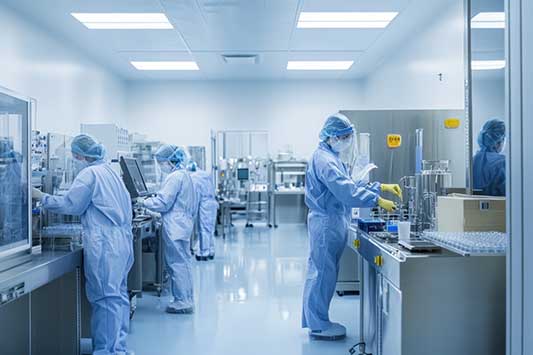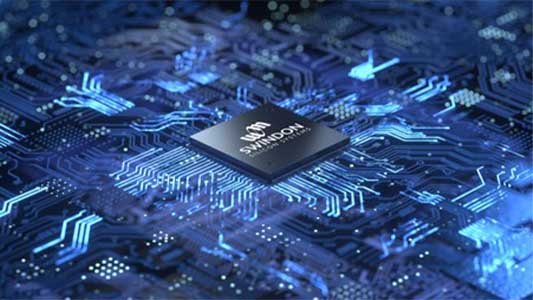Achieving cleanroom certification is a non-negotiable for electronics and pharmaceutical companies. But to meet cleanroom standards, manufacturers must be able to accurately measure the conditions of these environments. Here, Ross Turnbull, Director of Business Development and Product Engineering at industrial ASIC expert Swindon Silicon Systems, explains the role that temperature, humidity and pressure sensors play in monitoring cleanroom conditions and why custom ICs are preferable in these applications.
Defined by ISO 14644-1:2015 as controlled environments where airborne particle concentrations are closely regulated, cleanrooms are essential in a range of production processes.
For example, within the electronics industry, controlling the concentration of particles protects products such as semiconductors, aerospace equipment and consumer electronics from contamination and electrostatic discharge. Additionally, for pharmaceutical companies, cleanrooms reduce the risk of exposure to harmful particles, allergens and pathogens, ensuring the safety of batches of medicine and medical equipment.
The ISO certification required for a manufacturing process can range from ultra-clean Class 1 to the less stringent Class 9, depending on the specific product’s sensitivity to airborne particles. However, maintaining these controlled conditions requires continuous, high-accuracy environmental monitoring. Even minor fluctuations in temperature, pressure or humidity risk product quality and may result in cleanroom shutdowns.
Given the reputational and cost implications of these situations, what can manufacturers do to maintain appropriate cleanroom conditions?

Precision under pressure
The most obvious form of measurement within controlled environments is pressure monitoring, which acts as a barrier against contaminants by preventing them entering or leaking out of cleanrooms. One method of monitoring pressure is with a differential pressure sensor or transducer. This piece of equipment measures the difference in pressure between the cleanroom and adjacent areas before converting it into an electrical signal.
While particulate matter control is a vital consideration, cleanrooms also operate under rigorous temperature and humidity requirements. Temperatures that fall above or below the optimum range can result in increased shedding of workers’ skin cells beyond what protective gowning can contain. IC-based temperature sensors, which produce an electrical output proportional to absolute temperature, are ideally placed to help tackle this issue as they are quick to respond to temperature changes.
Meanwhile, measuring humidity is equally important, since overly humid rooms can lead to condensation forming on sensitive components. Cleanrooms with too low a level of humidity can result in greater electrostatic discharge. When electricity flows between two objects with different electrical charges, this may burn out tiny circuits, causing immediate failure or long-term reliability concerns. Digital humidity sensors are becoming increasingly popular due to their high integration, with no signal conditioning or digital conversion being required to output a voltage or frequency.
Why choose an ASIC?
Despite sensor technology improving as a result of digitalisation, sensors are only as effective as the chips that power them. Unlike off-the-shelf semiconductors, application-specific integrated circuits are custom-designed for the application, offering improved performance.
By tailoring every layer of the design, ASICs enable the integration of signal conditioning, processing and calibration directly into a single chip, boosting measurement accuracy and system responsiveness.
For temperature sensors, this means reduced noise, simplified calibration and faster response times, while pressure sensors benefit from embedded calibration data and enhanced signal conversion. When it comes to humidity sensors, ASICs allow for precise signal processing and reduced interference, helping to maintain stability across varied conditions.
ASICs also offer long-term availability and support, meaning that sensor manufacturers can avoid obsolescence issues that can arise when the standard ICs used in their equipment are no longer produced. That level of control and reliability is crucial in helping to avoid cleanroom shutdowns.
Custom chip-driven sensors provide electronics and pharmaceutical manufacturers with the performance, accuracy and reliability needed for their production processes.
Looking for a custom IC for your humidity, temperature and pressure sensor? Get in touch with our knowledgeable team.














